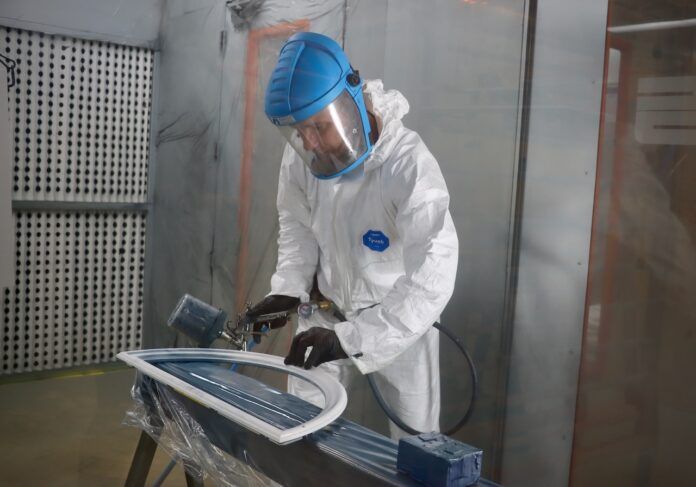
Product quality, product range and customer service are the most important factors when choosing a door supplier, according to a customer survey conducted by Hurst to gather exclusive insights into installers’ views of the market.
And when it came to the door itself, 62% of respondents believed that the most important factor when selling a door to an end-user is its appearance and design, with 78% stating that they had seen an increase in demand for bespoke colours from homeowners.
Price in both cases fell some way down the list of priorities.
“We are always looking at ways to enhance how we can support our customers”, Mark Atkinson, Hurst Sales Director, said. “Whether this is through our marketing package, our glass designs, or our investment in our product range, our focus is always on giving customers the tools and support to generate business.”
Hurst is also helping its customers meet the increased homeowner demand for colour by investing in a new £200k state-of-the-art paint shop at its site in Hull (pictured).
“For us, there is no better way to understand the needs of our customers than by speaking to them directly, to get their view on the market,” Mark said.
The survey revealed that most respondents expect demand to remain stable for all staple door materials throughout 2024, with foam core composite doors voted as most likely to increase compared to other materials, and traditional timber doors most likely to decrease.
For Hurst customers who supply multiple entrance door material types, foam core composite doors proved the most popular material, with 66% of respondents stating that they form over half of their sales.
Interestingly, while back doors remain the most common installation location for Hurst customers who purchase PVC-U door panels, 45% of installers are installing the majority of their panels into front doors.
Mark explains that because of this continued high demand, Hurst launched a brand-new panel brochure at the beginning of April, showcasing exciting new designs and colours available in their panel collection.
Fire doors proved divisive among installers, with only 39% of respondents stating they form part of their offering. While the main reason cited by 69% of the installers who do not offer fire doors is a lack of demand, 25% said that they don’t feel they possess the necessary skillset or qualification to install fire doors, and 21% stated that they were not confident around the regulations.
“Technical data sheets and comprehensive installation instructions have always been available from Hurst, and we refer our customers to third party installation training bodies, such as BM Trada, if they enquire about certified installation training,” Mark said.
“But based on the research, we are reviewing the tools available and how we can provide more support to our customers on the installation and legislation surrounding fire doors.”



